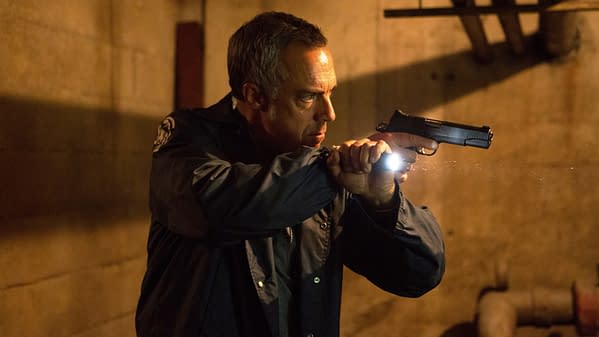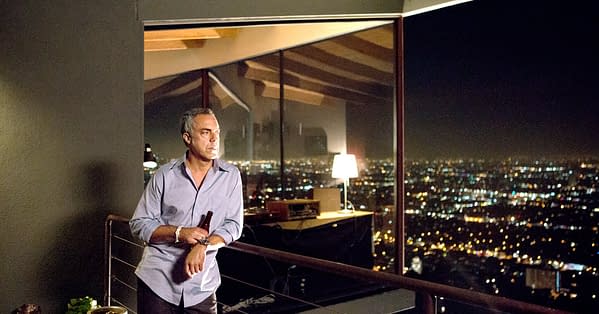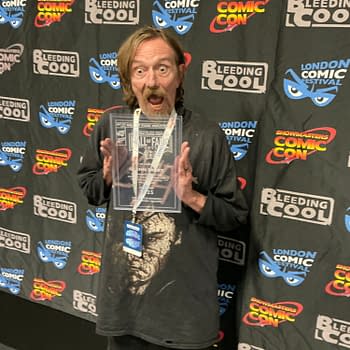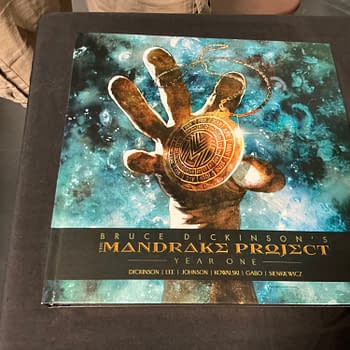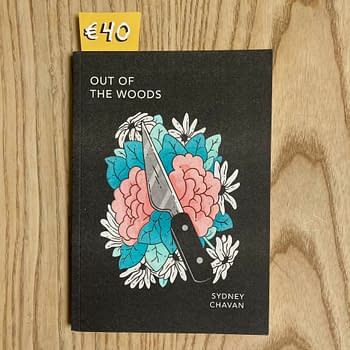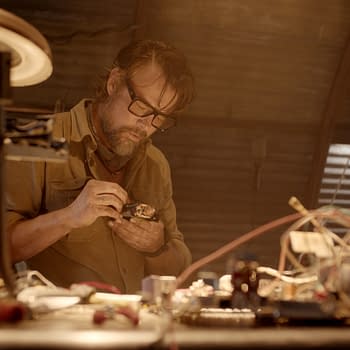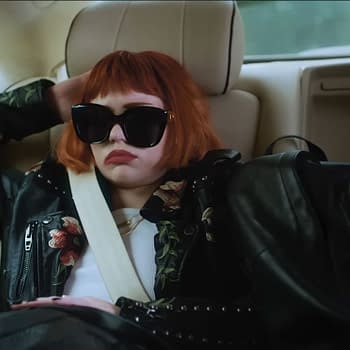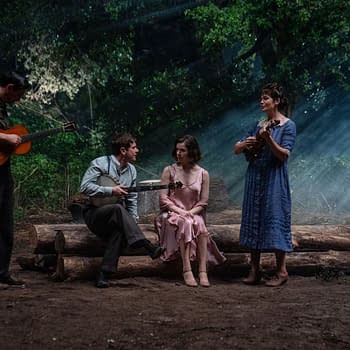Posted in: Look! It Moves! by Adi Tantimedh, Movies | Tagged: Action Lab Entertainment, adi tantimedh, Bosch, tv
Bosch And The Return To Noir City – Look! It Moves! by Adi Tantimedh
Adi Tantimedh writes,
I'm always happy for an excuse to write about Los Angeles as a mythical city, a state of mind, the city of Film Noir.
And Bosch is the latest perfect excuse.
A 10-part adaptation of the novels by Michael Connelly into a single season of TV to create its own "novel for television", the main draws here are a slow-burn performance by Titus Welliver and the City of Los Angeles itself.
Connelly, a former crime reporter for the Los Angeles Times, wanted to update Raymond Chandler's original model of the detective as the last "knight errand in the corrupt city who is not himself corrupt" and decided that such a character would only make sense as a police officer navigating both the messy internal politics of the department and the street politics of investigating murders. Hieronymous "Harry" Bosch is the result, a detective who's inseparable from the city, even when he has to leave town.
There had been numerous attempts to get a movie made out of a Bosch book, starting with attempts throughout the late 1990s and early 2000s to adapt the first novel, The Black Echo. After nearly twenty years, Bosch has landed in probably the best venue for his stories: a streaming episode TV series. It makes sense for Amazon to produce this show: a huge chunk of the fans of the books would have bought them from Amazon in the first place, and viewers who never read them might decide to order them from Amazon if they like the show. It's a perfect confluence of cross-media promotion, a way to sell books, a TV and Amazon as a service. There's a cheeky Easter egg in the show where Bosch explains that his swanky Hollywood Hills house was paid for by Hollywood money when they made a cheesy but successful movie out of one of his cases and titled it "The Black Echo".
Harry Bosch is a familiar archetype, the latest avatar for the conscience of Los Angeles, the noir city. This is the real LA, the one outside the glamourised, hothouse bubble of Hollywood and show business, the one where regular people live and work, are born, grow up and spend their entire lives in. The city is as important a character as Bosch is. Without the city, there is no Bosch.
While the cop show template was established back in the 1970s and Bosch certainly has the feel of some of the shows from that period, the pacing and mood of the show is closer to British and Scandinavian crime shows where atmosphere and character moments are more emphasised than plot. Bosch feels like a US equivalent of the Wallander series adapted from Henning Menkell's cop novels. It's a common convention of British and European detective shows to feature a brooding middle-aged cop hero with a messy personal life and a dogged devotion to the job. The show also doesn't shy away from portraying the flawed behaviour of cops, their tendency toward brutality, closing ranks, lying and bending the rules to protect themselves as common practise, something US network shows would never dare show but cable shows like The Wire portray in sociological detail.
That's not to say the show is perfect. There are compromises made to force the story to fit US TV conventions. The serial killer plot, cannibalised from a later novel, becomes a more generic, even clichéd and contrived story that goes the way we've come to expect in UK and US cop shows, with the prerequisite Screenwriting 101 demand of making the story personal to the hero by having the killer prey upon a shared kinship he has with the hero in ways that weren't present in the original novel. While plots from three books were adapted, recut and changed for the ten episodes, the show also lifts and reconfigures various characters, moments and relationships from more than ten novels and nearly twenty years' worth of material like Bosch's ex-wife and teenage daughter, who didn't appear till the later novels. It's an interesting exercise in adaptation to compare the differences between the books and the show.
For me, the real appeal of the show is to see a continuation of Los Angeles in movies and TV as Noir City. Filming in the parts of the city you don't normally see on TV shows, the parts outside of the tourist areas like Hollywood Boulevard or Santa Monica or Beverly Hills, it again grabs parts of reality to create its fictional reality, one of dark, existential brooding. This is the Noir City that was seen in movies in the 1940s and 1950s. You can believe this is the same city that was in Chinatown, then L.A. Confidential and even Michael Mann's Heat. It has the same air of political corruption and hypocrisy, the same sense of crime and murder erupting from its darker depths. It is part of the city's continuing fictional biography from movies and TV as depicted in the documentary Los Angeles Plays Itself. Call it a trip down Noir Lane if you like, where the identity of a city is expressed through its crime stories.
Bosch is now streaming on Amazon Prime.
Skating down mean streets at lookitmoves@gmail.com
Follow the official LOOK! IT MOVES! twitter feed at http://twitter.com/lookitmoves for thoughts and snark on media and pop culture, stuff for future columns and stuff I may never spend a whole column writing about.
Look! It Moves! © Adisakdi Tantimedh


